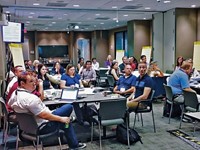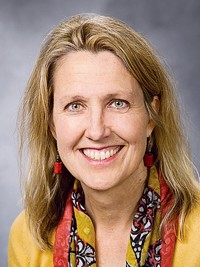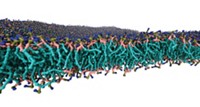Advertisement
Grab your lab coat. Let's get started
Welcome!
Welcome!
Create an account below to get 6 C&EN articles per month, receive newsletters and more - all free.
It seems this is your first time logging in online. Please enter the following information to continue.
As an ACS member you automatically get access to this site. All we need is few more details to create your reading experience.
Not you? Sign in with a different account.
Not you? Sign in with a different account.
ERROR 1
ERROR 1
ERROR 2
ERROR 2
ERROR 2
ERROR 2
ERROR 2
Password and Confirm password must match.
If you have an ACS member number, please enter it here so we can link this account to your membership. (optional)
ERROR 2
ACS values your privacy. By submitting your information, you are gaining access to C&EN and subscribing to our weekly newsletter. We use the information you provide to make your reading experience better, and we will never sell your data to third party members.
Environment
A Model For Scientific Inquiry
November 10, 2008
| A version of this story appeared in
Volume 86, Issue 45
I want to commend Richard N. Zare on his excellent editorial, “The Power of the Question” (C&EN, July 14, page 3). He raises the issue of how science is really done. As part of that process of scientific inquiry, Zare indicates that the central component is asking the big questions. His work with molecular frontiers encourages young people to get into the game of doing science by starting with big questions that interest them about the natural world.
This idea of questions at the center of the process of scientific inquiry is one that my research group addressed; in our case, looking for the answer to the question, “How do scientists really do science?” We know that the scientific method does not describe how science is actually done. My former students Becky Reiff and Teddie Phillipson and I interviewed more than 50 scientists and developed an initial model. After vetting the model with a larger number of scientists at several research universities, the model has been refined and is now referred to as the Activity Model for Scientific Inquiry, which is illustrated with a graphic shown below.
The Activity Model consists of 10 activities that scientists do. They can occur in any order, and some activities will likely be repeated during the course of a scientific study. “Investigating the Known,” for example, is a key step where scientists explore the literature not only to help them design their study, but also to refine their question and as part of their formal reporting for how their results fit or modify current thinking. It is here that scientists also consider models and theories to articulate an expectation for their study, design their study, or help them reflect on their findings.
Bill Harwood
Cedar Falls, Iowa





Join the conversation
Contact the reporter
Submit a Letter to the Editor for publication
Engage with us on Twitter